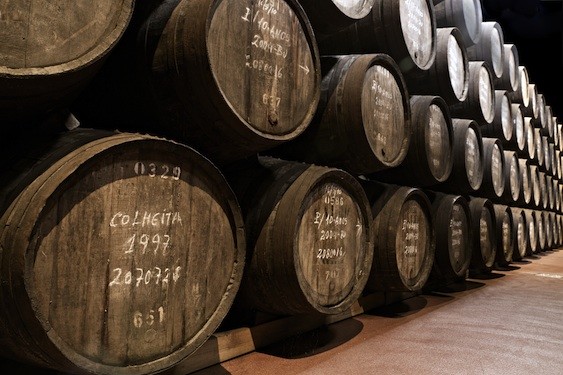What do you get when you take some wine and add a bunch of really strong alcohol to it? It sounds like the beginning to a bad joke, but I assure you this is the basic method of making some of the world’s most famous fortified wines.

You don’t have to be a circus strongman to appreciate a good fortified wine!
No, these aren’t wines for feudal sheriffs or circus strongmen Fortified wines, like those you’ll often find at the end of restaurant wine lists under the sweet or dessert wine sections, are simply specific kinds of wines that have had a neutral-flavored brandy spirit added to them for a specific effect or end result. Among the fortified wines you might have heard of are Port and Madeira from Portugal, Sherry from Spain, Marsala from Sicily and a variety of vins doux from France.
Fortified wines actually originated centuries ago (some experts place it as early as the 13th century) as a way of preserving wines and preventing them from oxidizing or turning into vinegar before they could be drunk. The extra ethanol alcohol from adding a strong brandy spirit (usually distilled from grapes, but sometimes other things such as grains or sugarcane) would preserve the wine longer…say for lengthy journeys from the wine region to the point of sale. The sweeter style was also historically more popular in many major markets, notably England.

Port is a famous fortified wine that comes from the town of Porto and the Douro Valley in Portugal.
In some cases, like with Port, the spirit is added before the fermentation process in the wine is complete. This stops the fermentation process by killing off the yeast before they can convert all the sugars in the wine into alcohol. Incidentally, it also kills off potentially harmful microbes that would spoil the wine. In other wines, such as some Sherry and Marsala, fermentation is allowed to run its course as usual, and then distilled spirits are added to preserve the wine, while sweetening agents are added to raise the sugar content of some of them.
Fortified wines are typically more alcoholic than table wines, with about 20% alcohol compared to 10-15%, and sweeter because they retain more residual sugar than wines that are allowed to complete fermentation. Then depending on how they are aged and for how long, they can become even more concentrated both in terms of alcohol and flavor. That’s why you’ll often see them categorized as dessert wines. However, some Sherries and Ports have been making a recent comeback as cocktail bases and pre-prandial aperitifs to whet the appetite.

Port has been making a comeback in cocktails, not just on the dessert list.
I’ll write future posts on each of those wines, their distinct characteristics and styles, their often-quirky origins (we’re talking sun-baked sea voyages, barrel pyramids and more!) and some great ones to try. But if you have a question about fortified wines in the meantime, feel free to tweet me @clustercrush!

